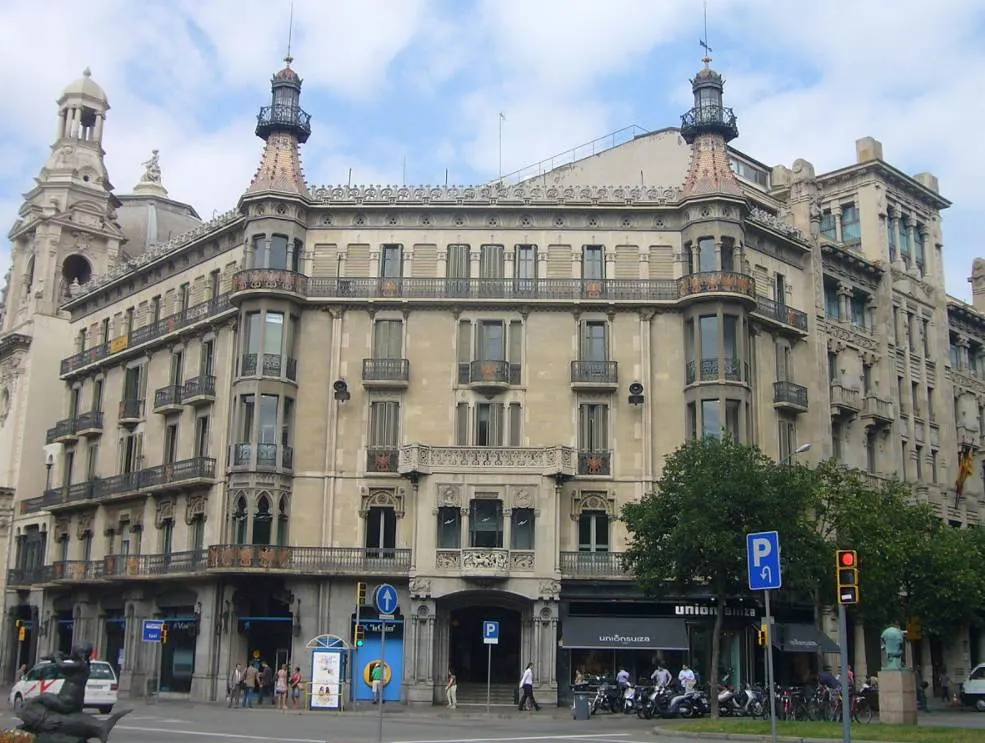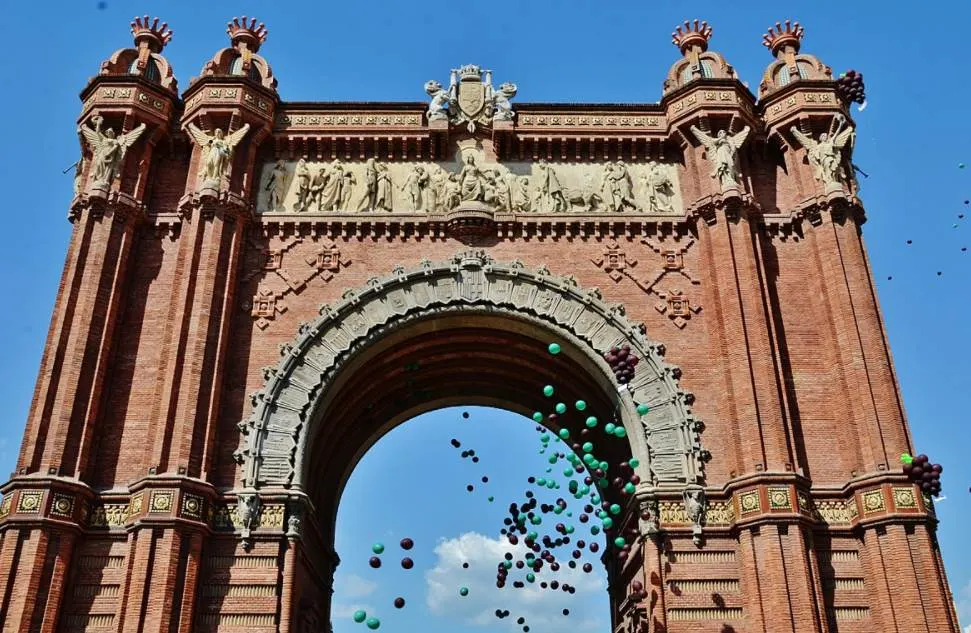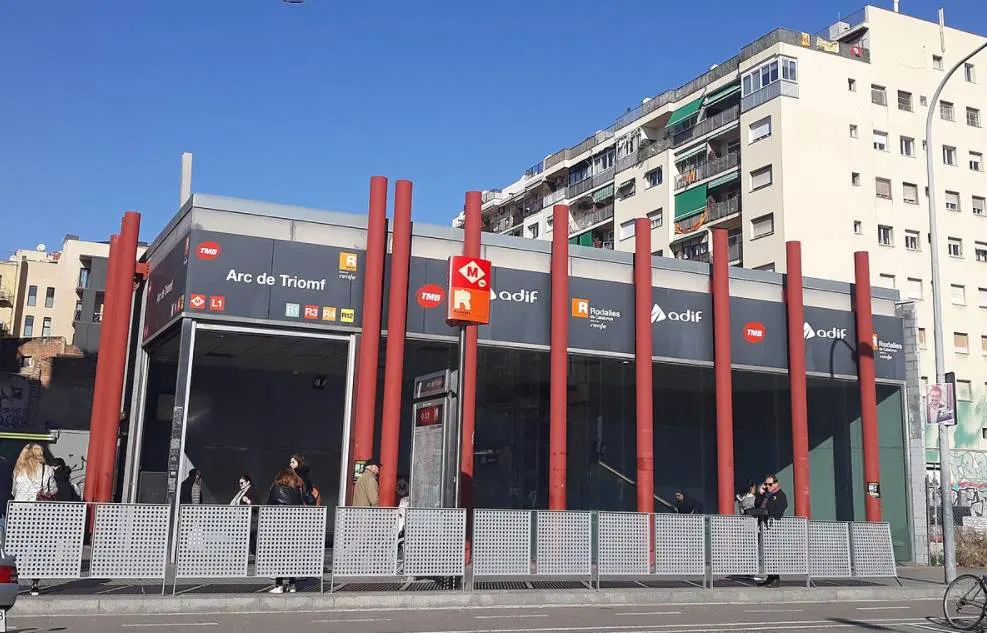Most of the triumphal arches that were built in ancient Rome were erected to commemorate specific events, often victories during a war. One of the most stunning buildings in Barcelona had a completely different purpose.
In this article, you’ll discover some of the most interesting facts about the Arc de Triomf in Barcelona, one of the city’s most fascinating landmarks.
1. It’s located on a wide promenade in central Barcelona
The Arc de Triomf is one of the most intriguing landmarks in Barcelona. It’s situated in the middle of the Passeig de Lluís Companys, a promenade located in the Ciutat Vella and Eixample districts in the historical heart of the city.
This promenade is an extension of the Passeig de Sant Joan, a major thoroughfare that cuts through the center of the city and which ends in the Parc de la Ciutadella.
Other famous buildings in Barcelona aren’t too far away either, including the fascinating Sagrada Familia, the magnificent Gothic Barcelona Cathedral, and one of Gaudi’s masterpieces called Casa Milà.

2. It was constructed as the entrance gate for a special event in 1888
The location of the Arc de Triomf might look a bit odd today, but that’s because it was constructed here for a special event called the 1888 Barcelona Universal Exposition.
This World Fait took place between April 8 and December 10 of 1888 and attracted over 2.3 million visitors to Barcelona. All of them passed through this monumental gate that marked the entrance of the exhibition grounds.
As you surely expected, these grounds were transformed into what is today the Parc de la Ciutadella, a green space on the northeastern edge of the city’s historical heart that covers an area of 280,000 square meters (70 acres).

3. The arch was designed by a Catalan modernist architect
When we think about Catalan modernist architects then the first names that come to mind are Antoni Gaudí and Lluís Domènech i Montaner, two people who left an incredible mark on the city of Barcelona.

This art movement emerged around the time that the 1888 World Fair took place and converged with similar movements such as Art Nouveau and the Vienna Secession movements.
The Arc de Triomf wasn’t designed by any of these architects but by a rather obscure member of the Catalan Modernism movement called Josep Vilaseca i Casanovas (1848-1910).
This man had close ties to Lluís Domènech i Montaner and was a teacher at the Escuela de Arquitectura de Barcelona for most of his professional career. One of his most famous words apart from the arch is the Casa Pia Batlló (1901) at the Rambla de Catalunya.

4. The structure features a distinctive architectural style
Josep Vilaseca i Casanovas was an architect who lived during a period that Neoclassicism made way for Modernism and this is reflected in the artist’s work.
His artistic expression was limited with this project because it served as the entrance gate of an event that was attended by an international audience. It was therefore influenced by the history of Barcelona.
The arch features a Neo-Mudéjar architectural style, a revival of the Mudéjar style which flourished on the Iberian peninsula between the 13th and 16th centuries. The Arabesque tiling and red brick decorations are common elements of this style.

5. The arch is decorated with reliefs sculpted by renowned Spanish sculptors
Like most triumphal arches that were constructed all around the world, it’s decorated with reliefs. These reliefs are located on both sides and are references to the event that took place in the late 19th-century.
The front decoration is a relief that was sculpted by renowned Spanish artist Josep Reynés and is called “Barcelona rep les nacions” or “Barcelona welcomes the nations.” This means it can be described as a welcome sign to visitors of the World Fair.
The opposite side, facing the Parc de la Ciutadella, features a relief designed by Josep Llimona i Bruguera (1864-1934), a sculptor who was influenced by French sculptor Auguste Rodin (1840-1917).
It’s called “Recompensa or “Repay” and is a reference to the awards that were given to participants of the event.
Both sides of the arch feature reliefs that represent allegories of agriculture and industry sculpted by Antoni Vilanova, and of trade and art sculpted by Torquat Tassó.

6. The pillars feature references to a 13th-century King of Aragon
If you look closely at the arch you can see that bats were carved into the stones just below the semi-circle that forms the arch. This is not some scary architectural feature such as gargoyles that were carved into Gothic cathedrals but has another meaning.
These bats are a reference to King Jaume I (1208-1276), also known as “James I the Conqueror,” as they were featured on his emblem. He was a monarch who ruled over vast parts of the Iberian peninsula in the 13th century.
His reign between 1213 and 1276 marks the longest of any Iberian monarch in history and was a time of great prosperity in the city of Barcelona. He also helped to develop the Catalan language, making him one of the most important figures in the city’s history.

7. How big is the Arc de Triomf in Barcelona?
The arch was constructed using a combination of bricks, majolica (lead-glazed pottery), and limestone. Its isolated location on the large promenade also makes it appear smaller than it is.
The structure has the following dimensions:
- Width: 27.7 meters
- Length: 12.4 meters
- Height: 29.8 meters
To give some reference to this number, it’s larger than the biggest triumphal arch constructed in antiquity which is the Arch of Constantine in Rome (21 meters / 69 feet high).
It is, however, smaller than one of the most famous triumphal arches, the Arc de Triomphe in Paris (50 meters / 164 feet high).

8. The arch can be reached via a subway station just nearby
If you plan to visit this magnificent landmark in the heart of Barcelona, then there’s a very easy way to reach it. That’s because the Arc de Triomf Subway Station is located just nearby.
When you exit this station you’re just a short walk away from the arch. The monument is located about 100 meters southwest of the station, pretty cool!

